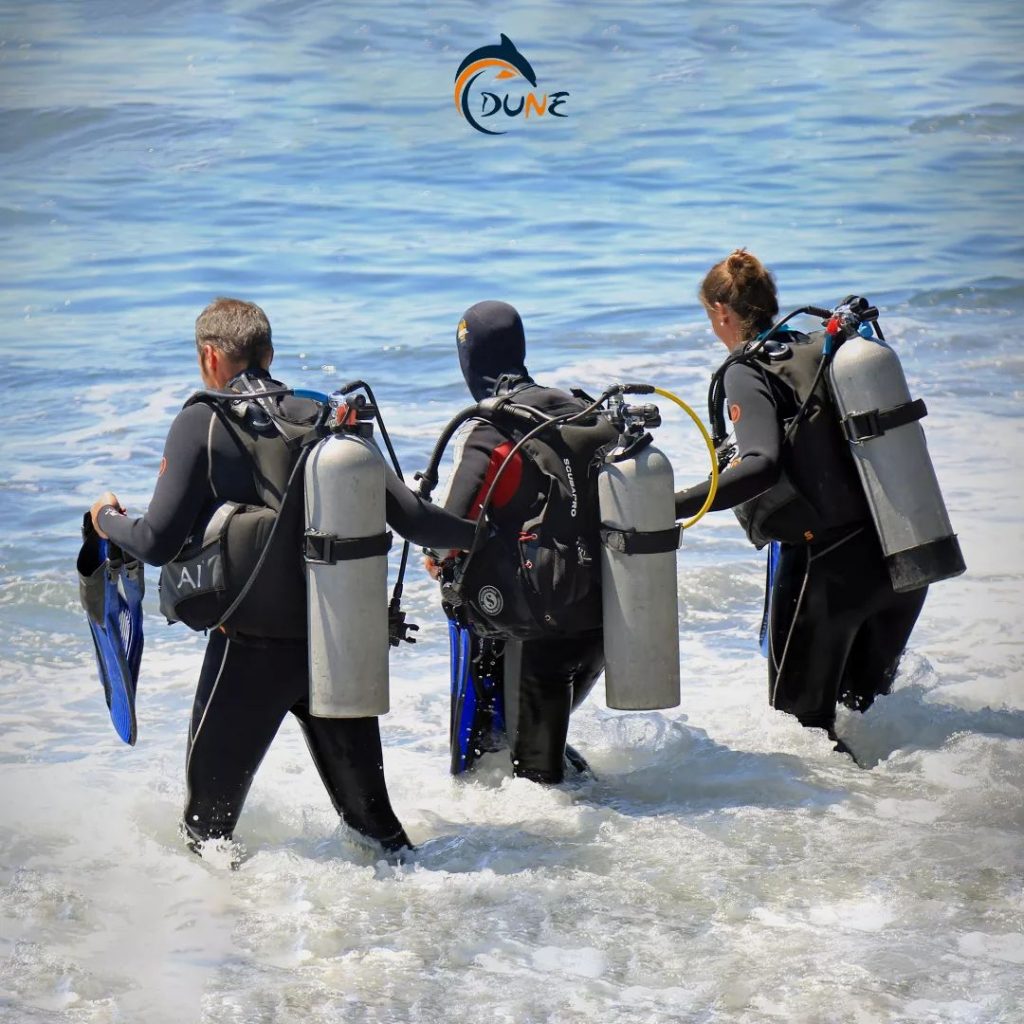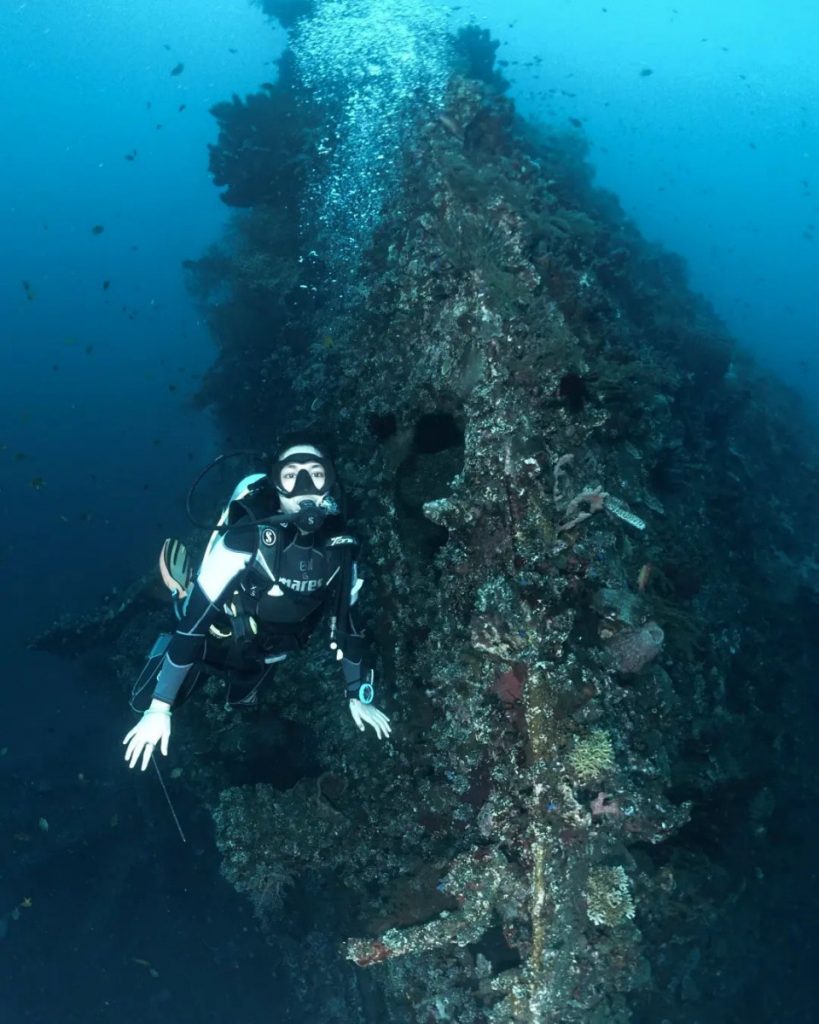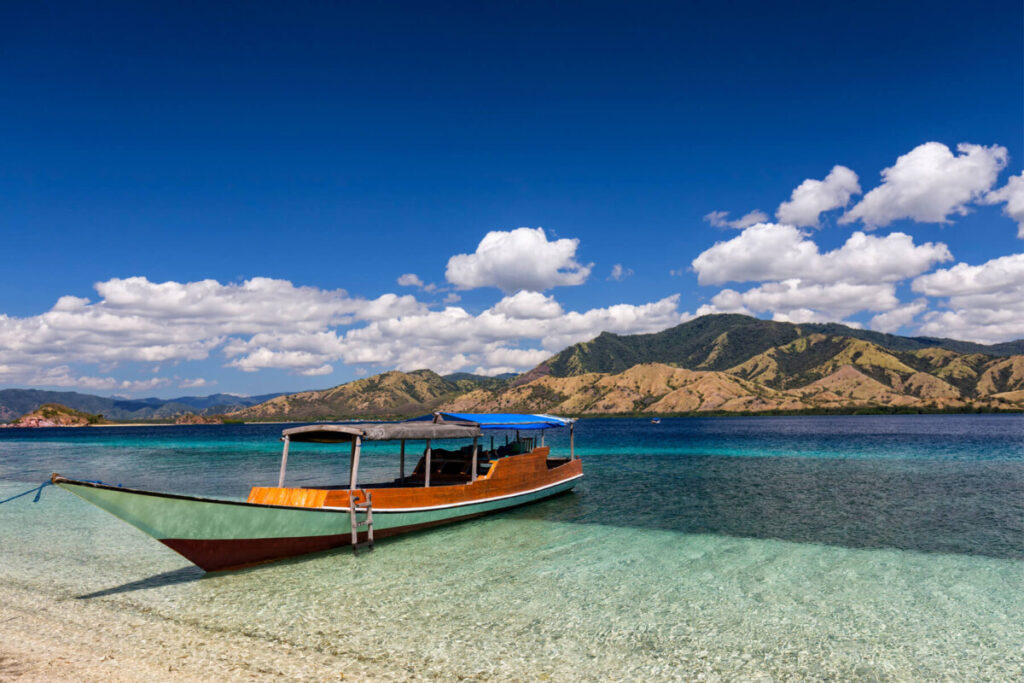
One of the most famous diving site in Bali, the Tulamben, is nestled at the north-east coast of this island. Tulamben is a small village community that’s far humbler than the busy Kuta, Seminyak, Canggu, or even Ubud. Not many travelers know Tulamben—but this village is immensely popular among divers! Diving in the Tulamben Bali is a must do for every divers that come to the island mainly for its wreck, the USAT Liberty Shipwreck from the World War II.
In 1942, a Japanese submarine sunk the ship, which then stranded itself in Tulamben. The ship was forced back into the water in 1963 as a result of earthquakes brought on by an eruption of Mt. Agung. The wreck eventually attracted daring scuba divers to the area, and a new industry was created. Since 1986, when Paradise, the first dive resort, opened, diving has become the main industry in the town. Another thing that makes the Tulamben Bali wreck diving so special is the shallow depth. The wreck sat in a slope and the shallowest part of the ship is just 3 meter under the surface. This makes the wreck as one of the few wrecks in the world that’s accessible by shore diving!
Yes, you can literally walk your way to the wreck. However, donning your fins and walking in pebbles before slowly submerging into the sea can be a challenge on itself! We have seen divers slipped and stumble on their shore diving in the Tulamben Bali. While it’s quite fun, getting up with fully donned fins and gears can be troublesome. If you are interested in exploring this beautiful wreck, learn some tips on shore diving to make your whole experience even better!

Research the Tulamben Bali Diving Site First
While suggestions from fellow shore divers are still likely the finest source of information regarding beach diving locations, the internet is a fantastic place to start your search for a reputable shore dive site. If a location is good for scuba diving, chances are good that someone else has already been there and has documented their dive experiences in a review or synopsis. These site evaluations can help you get a sense of the topography and marine life you can anticipate to observe, the optimum entry and exit sites, and any potential hazards.
Choose Your Time to Dive
Being independent of boat scheduling is one advantage of shore diving. The tides, however, may have an impact on your shore diving depending on where you are. The best diving conditions are typically found during slack tide. Entry and departure are considerably easier and visibility is generally better at slack high tide. Find out when high tide is, and make plans to arrive at the location then. It will be high tide when you get dressed and head to the water.
More Diving & Travelling Tips:
Discovering Amed: Beautiful Landscape, Slow Living, and Diving
The Best Liveaboard Diving Indonesia for Every Budget
Securing Your Rig
Secure all of your tools carefully because a modest surf and a gentle surge can cause serious damage to your equipment. Don’t just hold any equipment in your hands, such as diving lights or cameras. And instead of holding your fins in your fists, loop them over your wrists so you won’t loose them if you fall and stretch out your hand to catch yourself.
Watch Your Step
The sight is obscured by wave movement, making it challenging to spot possible dangers. Rocky entries provide additional issues, so exercising extra caution is beneficial. Slippery algae frequently grows on rocks near the ocean. Additionally, pebbles can slide underfoot, so always check your footing before taking a step. Also, keep in mind that it’s easy to lose your balance when wearing all of your gear.
More Diving & Travelling Tips:
Best Gears for Scuba Diving for Beginners
Getting Hit by the Waves
On your shore diving in Tulamben, the greatest obstacle to entering the underwater is perhaps the wave. Get ready to tumble, slip, or be knocked to the ground. When riding a wave, keep in mind to hold your mask firmly in place with an open palm. Put on your mask first if you’re wearing a hood so it can’t be jerked off, and then pull it on over the strap. Additionally, always wear your mask and regulator when entering and leaving the water so that, in the event that you fall over, you can still breathe and see.


